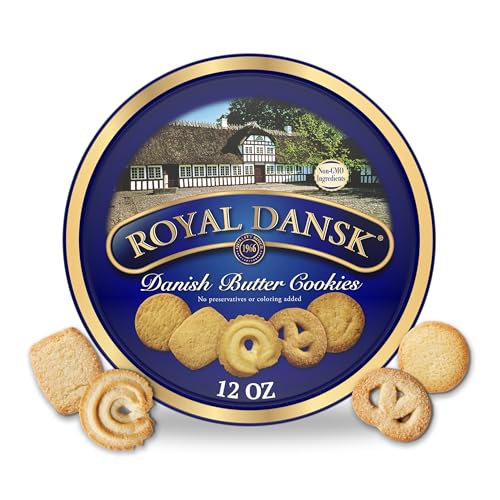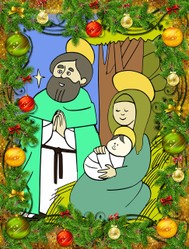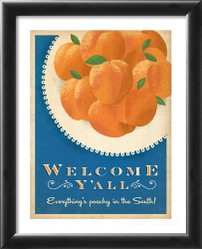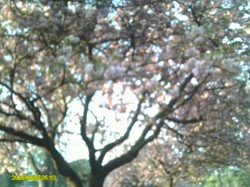A few weeks ago one of Wizzley's writers, Veronica, mentioned an old Irish custom that was upheld in our family, the practice of putting a lighted candle in the window on Christmas Eve. The Christian rationale behind this was to say to the Holy Family, who were shelterless on Christmas Eve, that they would be welcome in your house. A pleasant custom upheld by many families even now, but the Christian rationale for the custom overlays a more ancient belief, that in midwinter we celebrate the triumph of light over darkness. The darkest day of the year is the Winter Solstice, Dec 21st, and this was a time when our pagan forebears made a point of celebrating light to encourage the return of the sun.
In fact, we have the coincidence of two distinct sacred years. There is the old pagan year, whose midwinter festival was and still is Yule, a word that is still in use, which worked on cyclic time measured by the endless cycle of the seasons, and the Christian year which works on the Jewish concept of linear time,beginning in Advent four weeks before Christmas, and reaches its high point at Easter Tide, celebrating Christ's resurrection and his defeat of death. [The word Easter is itself derived from the name for a Saxon goddess]. So what we have is a Christian festival linked to an ancient pagan Spring celebration.
The symbolism of the festivals derives from both Christian and Pagan roots. Christianity came into a world that already had a sacred year well-institutionalized and bedded into people's lives. Moreover, the rationalistic dream of starting afresh with totally new ideas is not how life works, for we are all inheritors of the cultures into which we are born.There was in ancient symbolism much that had emotional impact and value. Nothing good should ever be lost, so the early Christians preserved not only the cycle of the sacred year, giving it their own slant, but some of the old pagan customs reintegrated into a new system. Catholicism worked with ancient customs, it was the more puritanical versions of Protestantism that opposed and tried to suppress them.
The Christmas tree is a case in point. As an evergreen it is presented as a sign of the eternal life brought by Christ, but in its older symbolism its evergreen character stands for the endurance of life through the cycle of the year and the time of darkness and cold. The Yule log stands for the preservation of warmth in the coldest time of the year. Holly, whose red berries stand for the sacred blood of Christ, was sacred to pagans because not only are its berries signs of life in the depth of winter, but its leaves are great animal fodder at time when there is little for animals to eat. Mistletoe, which to druids was a sacred symbol of fertility, never acquired a Christian meaning,but as fertility is one of the most ancient and fundamental needs of humans it never needed Christian symbolism.










 Women of the Gospelson 10/11/2025
Women of the Gospelson 10/11/2025
 Religious Gardenson 08/25/2025
Religious Gardenson 08/25/2025
 Doctor of the Church: John Henry Newmanon 08/03/2025
Doctor of the Church: John Henry Newmanon 08/03/2025
 Restoring the Palm Houseon 07/16/2025
Restoring the Palm Houseon 07/16/2025




Comments
As far as I know, yes, it is the only commonwealth country to have a thanksgiving.
Thank you for your comment below, in answer to my previous observation and question.
Canada celebrates a thanksgiving day albeit not the same day as the United States. For example, the former configures Thanksgiving 2024 as Thursday, Nov. 14 even as the latter configures it as Thursday, Nov. 28.
Is Canada the only Commonwealth country to celebrate a thanksgiving day?
No, there is no similar situation in Britain. We don't celebrate thanksgiving.
Thank you for your comment below, in answer to my previous observation and question.
Some Unitedstatesians criticize the concentration on Christmas decorations- and gifts-getting for less attention to Thanksgiving. They sometimes criticize such decorations and gifts as more oriented to New Year holidays than to Advent and Christmas seasons.
Do similar concerns about New Year holidays competing with Advent and Christmas seasons configure among British Isles-ers?
It depends on the individual. Some people prepare for Christmas early, others leave it for later.
Thank you for your comment, on Feb. 8, 2018, in answer to my previous, previous-day observation and question on Feb. 7, 2018.
Some Unitedstatesians begin their Christmas decorations-buying and repairing and their Christmas gifts-buying and making after the Labor Day weekend -- right around the corner this year on Monday, Sep. 2! -- or after Halloween.
How early do British Isles-ers commence Christmas decorations and gifts arrangements?
Derdriu, it is always great to hear from you. Thanks for the information about the path ceremony.
Yes, we do have Black Friday, for it was imported by certain multinational companies to boost sales and others followed suit. I am not happy with the importation, as this day belongs rightly in America, where it is linked to Thanksgiving, but it has no roots in British culture or history. People go mad for bargains at the sales; and on the first black Friday a supermarket near my home had someone injured in the scrabble for bargain television sets when a part of a display tumbled onto a shopper. I refuse to shop on that day as I have to confess that I find crowded places very difficult to handle. I am too quiet a person for that kind of pressure.
FrankBeswick, Thank you for the time travel through Christmas now and past. The tradition of a candle in the window still exists widely throughout Massachusetts, and particularly in Boston. There's also a celebration of a path -- on the way to the inn -- flanked by paper lanterns that's part of Christmas observances in Albuquerque, New Mexico. Rudolfo Anaya has written two books about them, both of which I reviewed on Wizzley.
Do you have the equivalent of Black Friday, which on this side of the pond is the big pre-Christmas shopping day the day after Thanksgiving? It used to signal the beginning of Christmas decorations and shopping even though for the last decade they start between Labor Day and Halloween.
Many churches in the UK now have a vigil mass. Where I live the situation is peaceful and there is little trouble, even at night, though occasionally drugs dealers have feuds. But the danger is drunken drivers on the roads late on Christmas Eve. I,for example, have to cross a major dual carriageway to reach church, so returning in the early hours of the morning when drunken drivers are around is risky.
This is a very varied article, for you touch on so much.
First, pagan celebrations and symbols were altered to fit Christianity, but out of necessity. The people of ancient times would not make an entire change, so some of their culture had to endure, albeit changed from paganism.
As for snow, I often wonder how Christmas looks in Australia. There is another whole hemisphere, and even here the idea of a white Christmas is not something we can expect.
One unfortunate consequence of the times here is many parishes have abandoned Midnight Mass due to the dangers of being out so late. Instead, a vigil Mass has often taken its place. I do not know if vigil Mass, the day before Sunday of a holiday, is worldwide, or an American practice. It must start after a certain time of day, consistent with the Jewish Sabbath beginning at sundown, although the time of day often is before the sun sets..